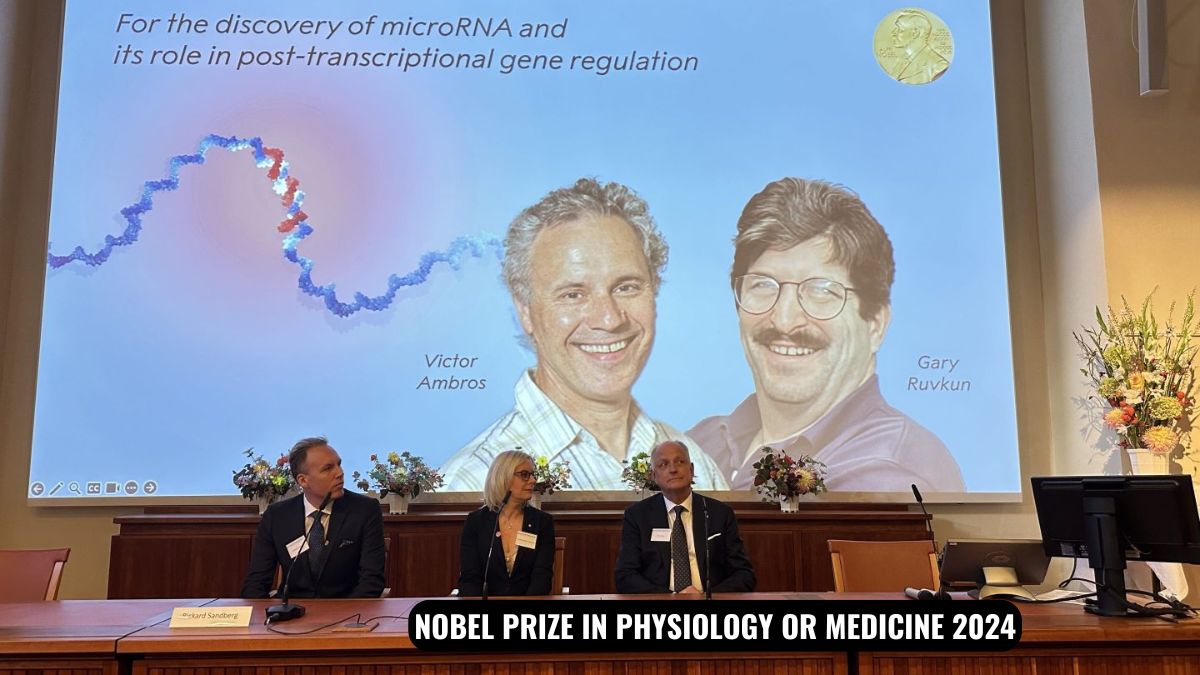
the Nobel Prize in Physiology or Medicine was awarded to Victor Ambros and Gary Ruvkun for their pioneering discovery of microRNA (miRNA) and its significant role in post-transcriptional gene regulation. This remarkable finding has transformed our understanding of how genes are controlled within living organisms, revealing a complex layer of gene expression regulation that is crucial for multicellular life.
MicroRNAs are small, non-coding RNA molecules, typically around 22 nucleotides long. Unlike messenger RNA (mRNA), which serves as a template for protein synthesis, miRNAs function by binding to specific mRNA targets. This binding can either inhibit translation into proteins or lead to the degradation of the mRNA itself. This mechanism allows cells to finely tune gene expression, impacting various biological processes such as development, growth, and metabolism.

Main Points
The Discovery Journey
Ambros and Ruvkun’s journey began in the early 1990s when they were studying the Caenorhabditis elegans worm. Ambros discovered the lin-4 gene, which produced a short RNA transcript that did not code for a protein but instead regulated the lin-14 gene. Ruvkun, working independently, found that lin-4 inhibited protein production from lin-14 mRNA rather than affecting its transcription. Their collaboration led to the realization that this small RNA could control gene expression at a post-transcriptional level.
Initially, their findings were met with skepticism within the scientific community. Many researchers considered it an anomaly specific to worms. However, as more studies emerged, it became clear that microRNAs are a universal mechanism of gene regulation present across many species, including humans. Today, it is known that the human genome encodes over a thousand different microRNAs.
Mechanism of Action
MicroRNAs exert their regulatory effects through several steps:
- Biogenesis: MicroRNAs are transcribed from DNA as primary transcripts (pri-miRNAs). These long transcripts are processed in the nucleus by the Microprocessor complex (composed of DROSHA and DGCR8) into precursor miRNAs (pre-miRNAs).
- Export: Pre-miRNAs are exported from the nucleus to the cytoplasm by Exportin-5.
- Maturation: In the cytoplasm, pre-miRNAs are further processed by DICER into mature miRNAs.
- Target Binding: Mature miRNAs are loaded onto the RNA-induced silencing complex (RISC), where they bind to complementary sequences in target mRNAs, leading to either translational repression or degradation.
This intricate process underscores how microRNAs can influence multiple genes simultaneously and how a single gene can be regulated by various microRNAs. This flexibility allows for complex regulatory networks that govern cellular responses to environmental changes.

Implications for Health and Disease
The discovery of microRNA has profound implications for understanding health and disease. Dysregulation of miRNA activity has been linked to various conditions, including cancer, diabetes, and autoimmune disorders. For instance:
- Cancer: Abnormal miRNA expression can lead to uncontrolled cell growth.
- Developmental Disorders: Mutations in miRNA genes can result in congenital abnormalities.
- Neurodegenerative Diseases: Changes in miRNA profiles have been observed in conditions like Alzheimer’s disease.
Understanding these mechanisms opens new avenues for therapeutic interventions. Researchers are exploring ways to manipulate miRNA pathways as potential treatments for these diseases.
Future Directions
The recognition of Ambros and Ruvkun’s work highlights the importance of fundamental research in biology. As scientists continue to explore the roles of microRNAs, new discoveries may lead to innovative strategies for diagnosing and treating diseases linked to gene regulation.
The Nobel Committee emphasized that this year’s prize underscores a vital regulatory mechanism used in cells to control gene activity. The findings have not only advanced our fundamental knowledge but also hold promise for developing new therapeutic approaches targeting specific miRNAs.





